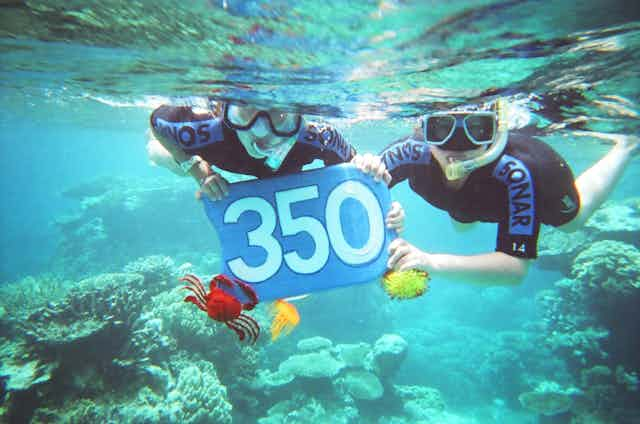The Great Barrier Reef may have been spared the indignity of being listed as a World Heritage Area “in danger” this week, but the Reef’s woes are just beginning.
There are 962 properties on the world heritage list. Most of these are protected for their cultural values, while many, like the Great Barrier Reef, are protected for their natural values. Thirty-eight sites have been placed on the world heritage “in danger” list in recognition of the damage they have sustained or risks they face.
The World Heritage Committee agreed to postpone their review of the Great Barrier Reef to 2014, as the Queensland and Federal governments prepare reports into coastal development. But it isn’t just coal and ports that are the problem.
It is only a matter of time before the Australian government and the international community will have to face up to reality. Climate change is fundamentally challenging the way we go about protecting the environment.
To protect the reef, look beyond the coast
Managing the Reef now can buy time while a global response is hammered out to deal with climate change and ocean acidification. But the Federal and Queensland governments don’t seem to recognise time is running out.
In fact, neither does the World Heritage regime itself. It remains based on a somewhat dated view about how natural environmental assets should be protected.
The 1972 World Heritage Convention, which defined how and what can be listed as World Heritage, is built on the premise that sites are best protected by conservation at the site. Historically this made sense. The Convention is one of the earliest environmental treaties, and concluded at a time when the main threats to world heritage were highly localised. It is a bit like a museum, seeking to preserve certain outstanding illustrations of cultural and natural property for future generations.
What it doesn’t do is account for natural change, or the much more serious threat of human-induced change. World heritage properties cannot be frozen in time. In the current geological epoch, which we can think of as the Anthropocene, the greatest single threat to many world heritage properties is climate change.
Back in 2004 a report from University of Sydney found the Howard government’s failure to ratify the Kyoto Protocol and to support international initiatives to curb greenhouse gas emissions was one reason among several why the Great Barrier Reef might be included on the “in danger” list. We mustn’t let the current debate about development hide the reality of climate change.
World Heritage can’t address this. That is for other regimes, chiefly the UN Framework Convention on Climate Change, to resolve. What World Heritage can do is draw attention to global threats that major environmental assets face. Its “in danger” listing process is a key mechanism to achieve this.
For well over a decade there has been discussion over whether the Great Barrier Reef should be placed on the “in danger” list. The main reason for this is the dawning realisation the Reef will be severely damaged by rising sea temperatures from climate change.
2012: development the new threat
The recent discussions about the reef have focused on the range of developments proposed for the Queensland coast, such as new or expanded ports to facilitate coal exports.
This is based on a 2012 report from UNESCO and the IUCN. It warned Australia the reef would be placed on the “in danger” list unless this development was curtailed or properly assessed.
The report set out 14 detailed recommendations for getting the protection and management back on track. These included:
- no new port development outside existing port areas
- an independent review of developments at Gladstone and Curtis
- an independent review by internationally recognised and widely respected scientific experts of the overall planning, protection and management of the Reef
With official endorsement by the World Heritage Committee in 2012, it was clear the committee was keeping watch on the Reef, and that a brake had to be placed on coast developments.
On a positive note, the report observed that the actual management of the Reef was world-class, and considered the “gold standard” for conserving large marine areas.
2013: still on the brink
In February 2013 the Great Barrier Reef Marine Park Authority responded to the 2012 report and its recommendations. Several aspects of the Government’s response have been subject to significant criticism, particularly in respect to Gladstone Harbour.
Media reports earlier this week indicated that discussions at the 37th Session of the World Heritage Committee turned on whether Australia was satisfying a host of “priority issues” for protecting the reef. These have been identified by the UNESCO World Heritage Centre and the IUCN, but not yet made public.
At the 2013 World Heritage session officials were satisfied that Australia was meeting some but not all of their recommendations. They gave Australia further opportunity before 2014 to show that it is meeting the Convention obligations. There’s an ultimatum of sorts on development – any new coastal development with an impact on the Reef’s heritage values will be considered a violation.
The June 2013 decision of the World Heritage Committee has, like the 2012 decision, again preserved the status quo for the Reef. While recognising the threats to the Reef, those have not yet risen to a level that would allow the Committee to list the property on the “in danger” list.
Without a move on climate change the reef will remain “in danger”, and not just on the World Heritage list.

